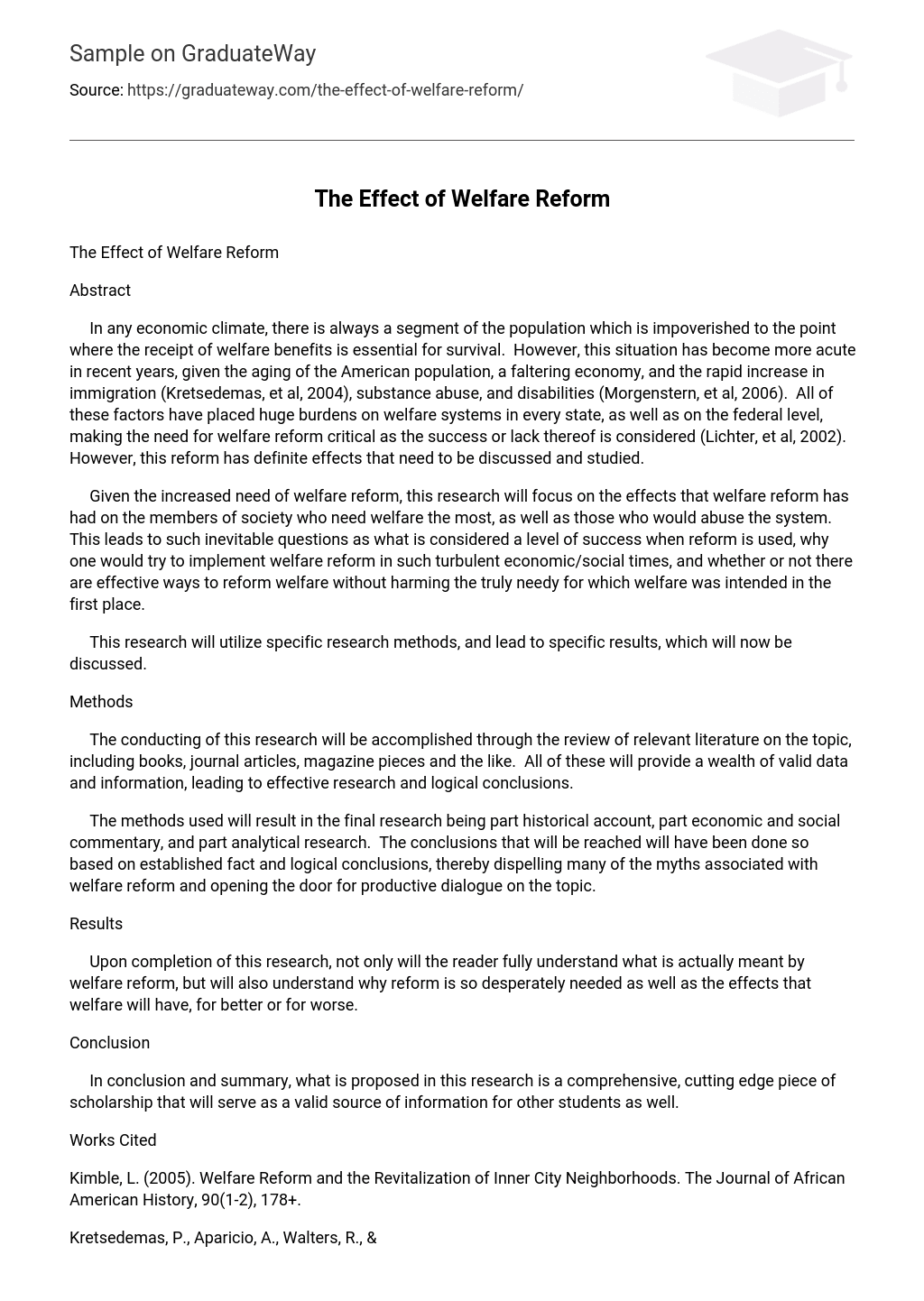Abstract
In any economic climate, there is always a segment of the population which is impoverished to the point where the receipt of welfare benefits is essential for survival. However, this situation has become more acute in recent years, given the aging of the American population, a faltering economy, and the rapid increase in immigration (Kretsedemas, et al, 2004), substance abuse, and disabilities (Morgenstern, et al, 2006). All of these factors have placed huge burdens on welfare systems in every state, as well as on the federal level, making the need for welfare reform critical as the success or lack thereof is considered (Lichter, et al, 2002). However, this reform has definite effects that need to be discussed and studied.
Given the increased need of welfare reform, this research will focus on the effects that welfare reform has had on the members of society who need welfare the most, as well as those who would abuse the system. This leads to such inevitable questions as what is considered a level of success when reform is used, why one would try to implement welfare reform in such turbulent economic/social times, and whether or not there are effective ways to reform welfare without harming the truly needy for which welfare was intended in the first place.
This research will utilize specific research methods, and lead to specific results, which will now be discussed.
Methods
The conducting of this research will be accomplished through the review of relevant literature on the topic, including books, journal articles, magazine pieces and the like. All of these will provide a wealth of valid data and information, leading to effective research and logical conclusions.
The methods used will result in the final research being part historical account, part economic and social commentary, and part analytical research. The conclusions that will be reached will have been done so based on established fact and logical conclusions, thereby dispelling many of the myths associated with welfare reform and opening the door for productive dialogue on the topic.
Results
Upon completion of this research, not only will the reader fully understand what is actually meant by welfare reform, but will also understand why reform is so desperately needed as well as the effects that welfare will have, for better or for worse.
Conclusion
In conclusion and summary, what is proposed in this research is a comprehensive, cutting edge piece of scholarship that will serve as a valid source of information for other students as well.
Works Cited
Kimble, L. (2005). Welfare Reform and the Revitalization of Inner City Neighborhoods. The Journal of African American History, 90(1-2), 178+.
Kretsedemas, P., Aparicio, A., Walters, R., & Rai, K. (2004). Immigrants, Welfare Reform, and the Poverty of Policy. Westport, CT: Praeger.
Lichter, D. T., & Jayakody, R. (2002). Welfare Reform: How Do We Measure Success?. 117+.
Morgenstern, J., & Blanchard, K. A. (2006). Welfare Reform and Substance Abuse Treatment for Welfare Recipients. Alcohol Research & Health, 29(1), 63+.





